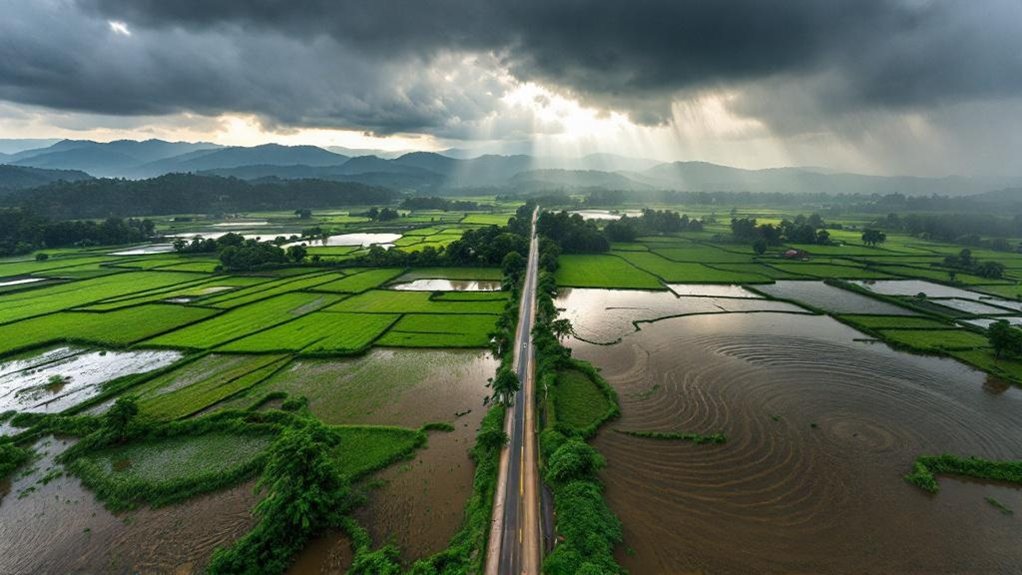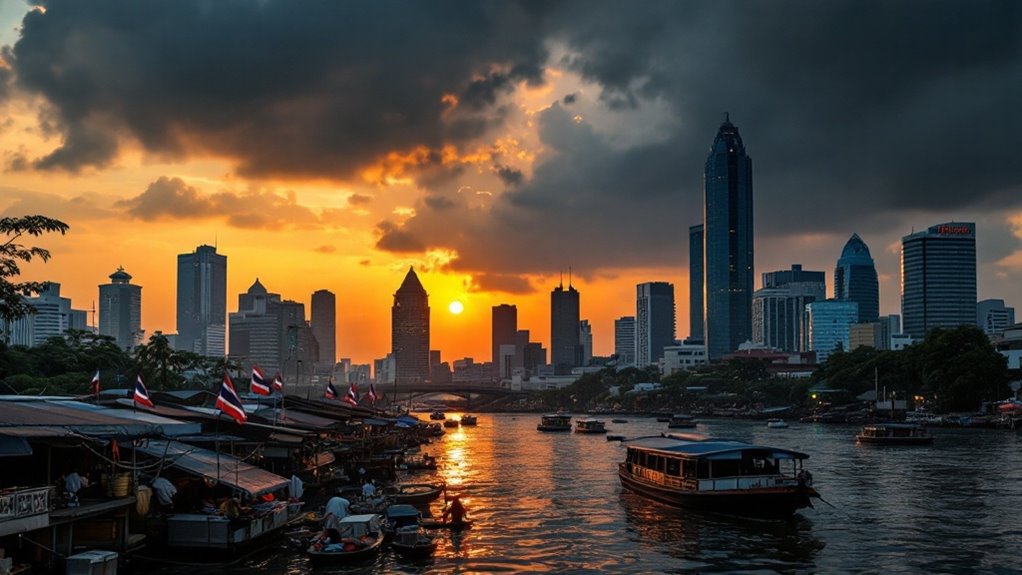Drenching monsoon rains, intensified by Tropical Storm Danas, are causing rainfall totals across Thailand to exceed 30-year norms, raising the risk of flash floods in 41 provinces, particularly in the north, northeast, and east. Bangkok has already recorded nearly 500 millimeters of rain this year, straining drainage systems designed for shorter downpours. Flood warnings extend to coastal and urban areas, while agricultural regions face significant losses. Additional analysis will provide further insight into the most vulnerable locations and ongoing mitigation efforts.
As Thailand enters the 2025 monsoon season, early rainfall levels have already surpassed the 30-year average for April and May, raising concerns about widespread flash flooding across the country. Meteorological data indicates a strong monsoon trough extending over northern and northeastern regions, supported by a persistent low-pressure cell that intensifies rainfall.
The prevailing southwest monsoon over the Andaman Sea, Thailand, and the Gulf of Thailand is fueling widespread and locally heavy rains. Forecasts project particularly intense rainfall in the north, upper northeast, and eastern provinces, with up to 70% of these areas likely to experience heavy downpours. In some locations, rainfall rates are expected to exceed 80 millimeters within three hours, a threshold known to trigger flash floods. Bangkok received 493.5 mm of rainfall from Jan 1 to May 29, 2025, exceeding the 30-year average and highlighting the severity of this year’s monsoon impact.
Widespread heavy rains from the southwest monsoon could bring flash floods, with rainfall in some areas expected to surpass critical thresholds.
A total of 41 provinces, primarily in the northern, northeastern, and eastern parts of the country, face heightened flood risk. Provinces such as Mae Hong Son, Chiang Mai, Chiang Rai, Lampang, Phayao, and Tak are under close watch, given their exposure to the monsoon trough. Coastal and maritime conditions are also a growing concern, as moderate winds and waves up to 2 meters are forecasted for the Andaman Sea and Gulf, prompting warnings for mariners and residents in low-lying coastal areas.
Southern provinces, including Songkhla and Pattani, remain vulnerable as recent severe flooding in late 2024 devastated major rubber-producing areas. Low-lying regions, foothills, and areas adjacent to waterways are especially susceptible to sudden runoff and localized flooding. Urban centers like Bangkok are also at risk, particularly due to population density and limitations in drainage capacity when intense rainfall occurs.
Flash floods are typically triggered when short bursts of extreme rainfall exceed the capacity of drainage systems. The combination of topographical factors, such as hills and valleys, and the presence of impervious urban surfaces, further increases vulnerability.
Bangkok’s drainage infrastructure is designed to handle up to 80 millimeters of rain in three hours; rainfall beyond this level leads to significant local flooding. In agriculture, the 2024 floods damaged approximately 2 million acres of southern rubber plantations, with losses estimated at 20 billion baht.
Repeated flooding disrupts rural livelihoods, damages critical infrastructure, and highlights the need for continuous monitoring and upgrades to both urban and rural flood mitigation systems.








